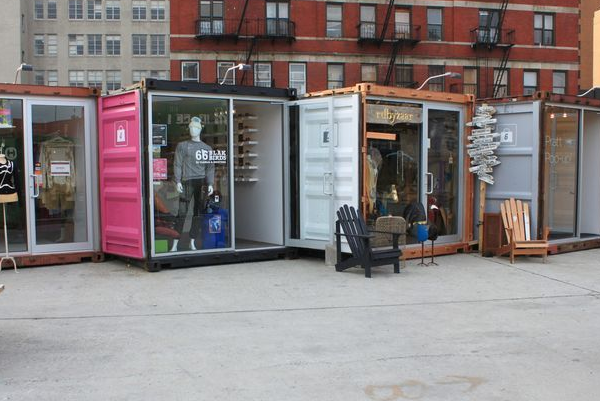 An ordinary person utilizes several storage spaces every day, whether they are creating a folder for selective files in the computer or hanging clothes in their closet. It saves time, space and makes it easier to navigate. Cupboards, drawers, and lockers are a few common examples of storage containers that are specially designed for different types of domestic storage needs. At a commercial scale, storage containers have more significant applications and are also known as cargo containers, Conex boxes, or sea vans. Storage containers come in different sizes and types but have a fundamental function to serve as an effective means of organization for personal or commercial belongings.
An ordinary person utilizes several storage spaces every day, whether they are creating a folder for selective files in the computer or hanging clothes in their closet. It saves time, space and makes it easier to navigate. Cupboards, drawers, and lockers are a few common examples of storage containers that are specially designed for different types of domestic storage needs. At a commercial scale, storage containers have more significant applications and are also known as cargo containers, Conex boxes, or sea vans. Storage containers come in different sizes and types but have a fundamental function to serve as an effective means of organization for personal or commercial belongings.
Uses of Storage Containers
Storage containers have various applications in different capacities. For example, businesses like restaurants, retail dealers, or bookstores often rely on these to handle the storage. Hospitals may use them for medical equipment, art studios for art supplies, schools for stationary, and so on. Storage containers can be of great significance when you are just starting your business and do not have a warehouse to store your goods. Storage containers are convenient to arrange, manage, and move around and can help businesses in keeping their important items categorized into storage compartments.
Storage containers can be used as a temporary or permanent repository. People who are remodeling their houses or have extensive construction work going on often organize their possessions through storage containers. Otherwise, the mismanagement of equipment can create problems in the construction or renovation process. While these operations are interim, some innovative people use storage containers for more elaborate purposes. These containers can be modeled and customized into different shapes to accommodate the precise requirements of a business.
Types of Storage Containers
If you call a company or visit a store for container selection, you will have multiple options available. Though it may sound confusing at first, it also means that there is a specially designed container for each purpose. Learning about their types will help you make informed decisions.
- Dry Containers
As the most common kind of containers, they are used for general purposes. Often rectangular or cubical in shape, they offer strength, capacity, and protection. Companies usually build them with rock-solid metals or alloys, and extensions like cabinets, tanks, and shelves are also available. Many shipping businesses also rely on these for the transport of cargo across the oceans. As the name suggests, the layered walls, floor, and roof keep the load dry by offering protection from harsh weather conditions like floods and rains.
- Tunnel Containers
Tunnel containers are so-called because they have a door on each of the two ends. These provide greater ease of access, and you can load and unload quickly. There is better risk-management with two walk-in doors because if one door is jammed due to rust or backed against a wall, you can count on the other entrance to retrieve your stuff. Like the dry containers, they are also water-resistant and air-tight.
- Reefer Containers
When companies need to store or transport temperature-sensitive materials, they can depend on reefer containers. These have decks installed on the floors to ensure temperature and air management. This mechanism keeps the substances, like ice-creams, vegetables, or frozen meat, at the desired temperature. They may be costly due to fuel and electricity requirements, but reefer containers serve their purpose well.
- Open Top Containers
With a self-explanatory name, these vessels do not have a roof. It means that you can load and arrange the material effectively from the top. However, it often requires cranes and is more suitable for the construction industry where heavy machinery or auto-mobiles can be placed through the open tops of these containers. Some truck companies also rely on them for storing large tires. If you work in the transport industry, you can benefit from these containers.
- Hard Top Containers
These are very similar to the Open Top containers in structure. The only notable difference is that they have a detachable roof, which works like a pot’s lid. You can latch or unlatch it based on your preference and the nature and size of the materials you wish to store or transport.
Dimensions of Containers
Alongside the structural differences, storage containers may also have different sizes and dimensions. Most of them are available in 20ft and 40ft as standard sizes. Each container has a different height, weight, door weight, and cubic capacity in both the 20ft and 40ft sizes. For example, a standard dry container has these dimensions:
- 20 ft: 9m length, 2.35 m width, 25,000 kg payload capacity, and 33.2 m3 cubic capacity.
- 40 ft: 03 m length, 2.4 m width, 27,600 kg payload capacity, and 67.7 m3cubic capacity.
Conclusively, you should assess your needs and then browse through the structural and dimensional differences in the available containers to find the ideal one.
Become a Harlem Insider!
By submitting this form, you are consenting to receive marketing emails from: Harlem World Magazine, 2521 1/2 west 42nd street, Los Angeles, CA, 90008, https://www.harlemworldmagazine.com. You can revoke your consent to receive emails at any time by using the SafeUnsubscribe® link, found at the bottom of every email. Emails are serviced by Constant Contact








